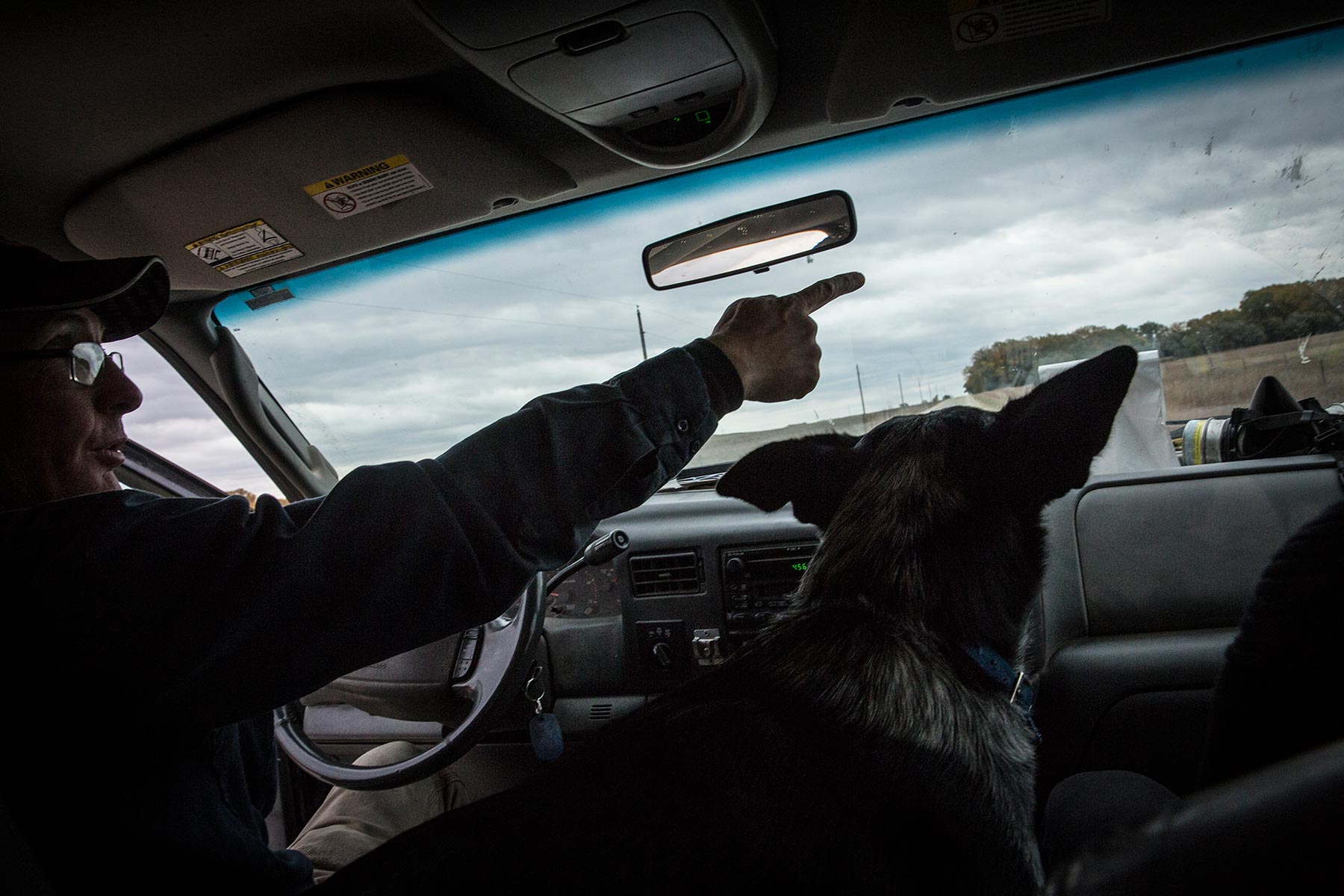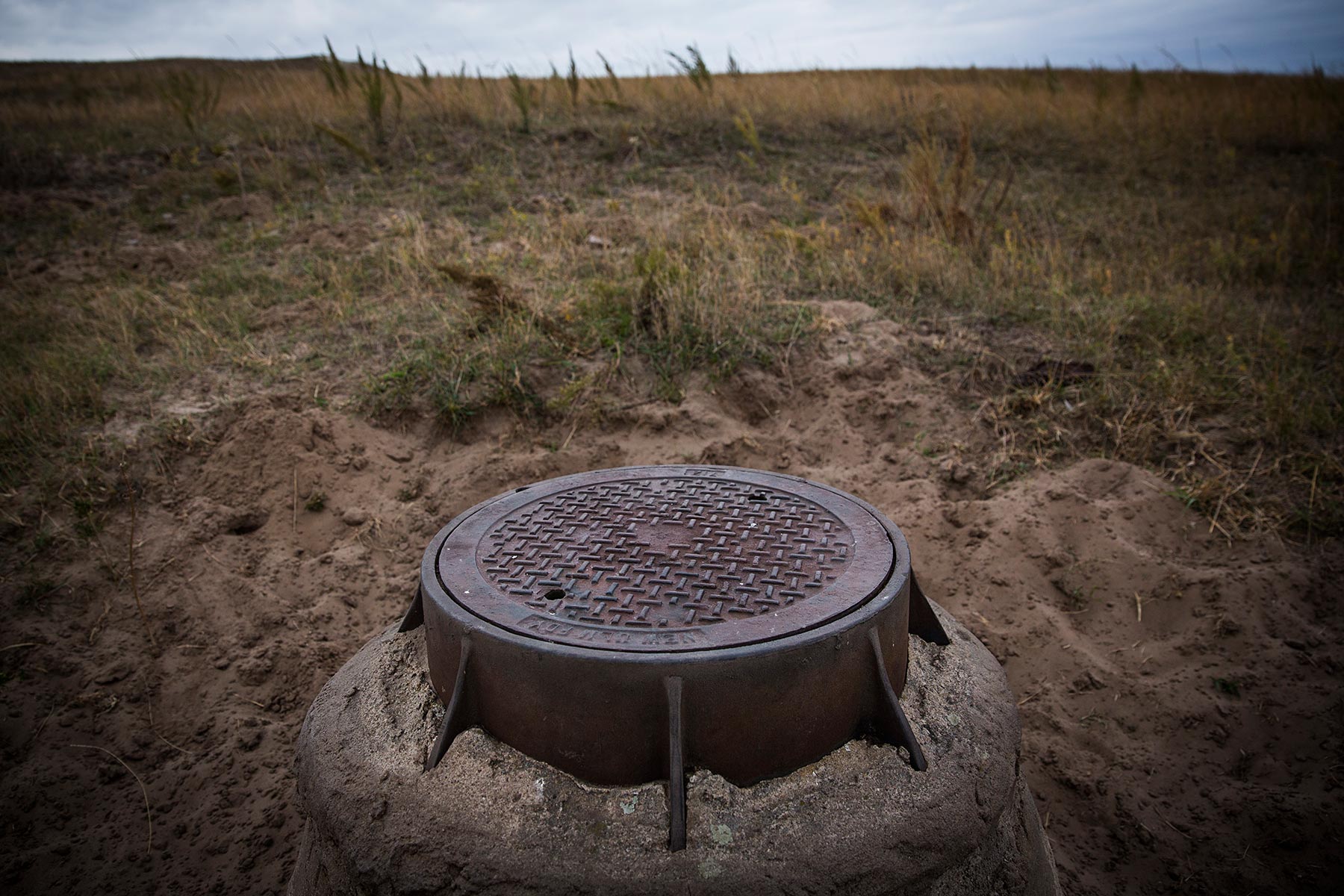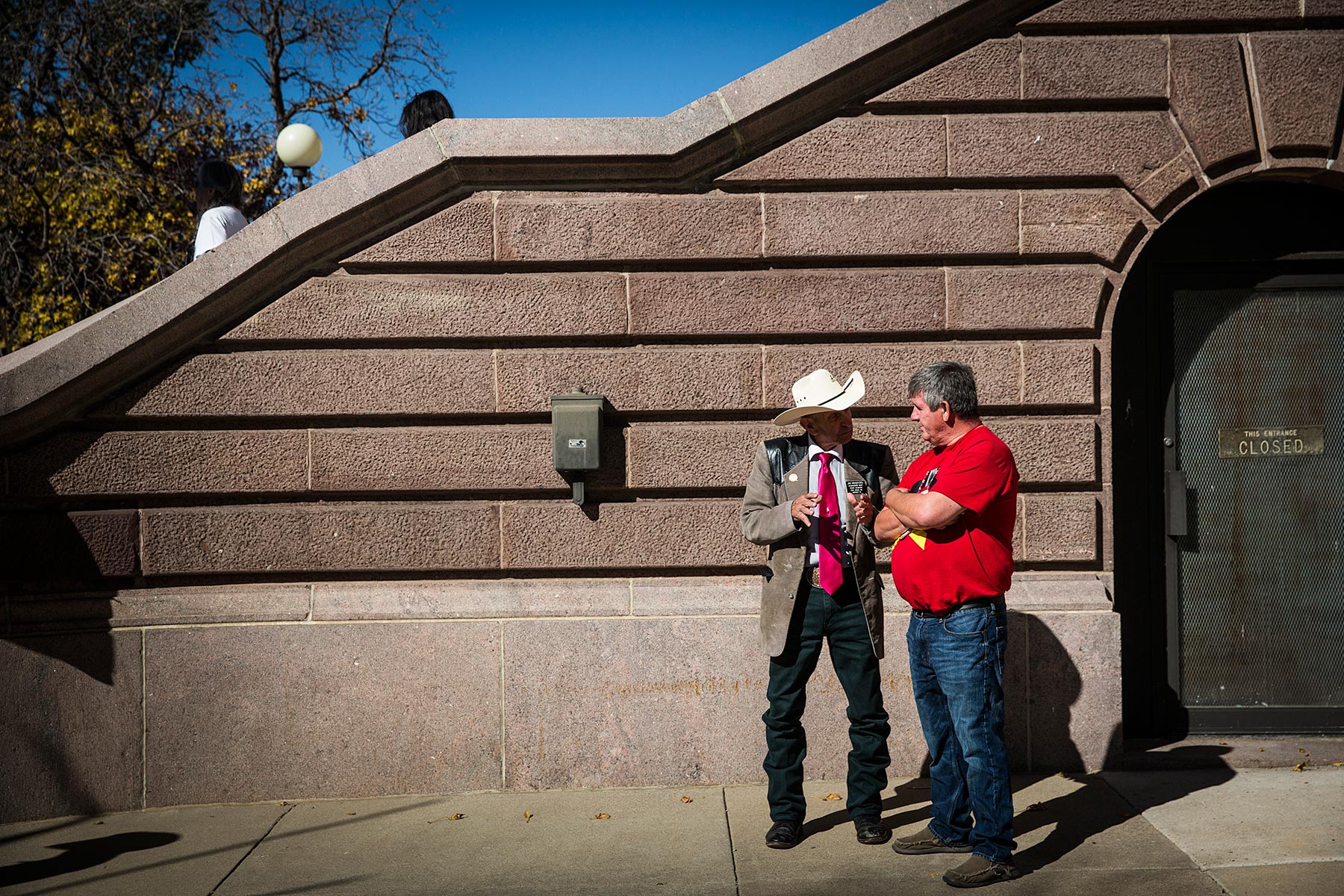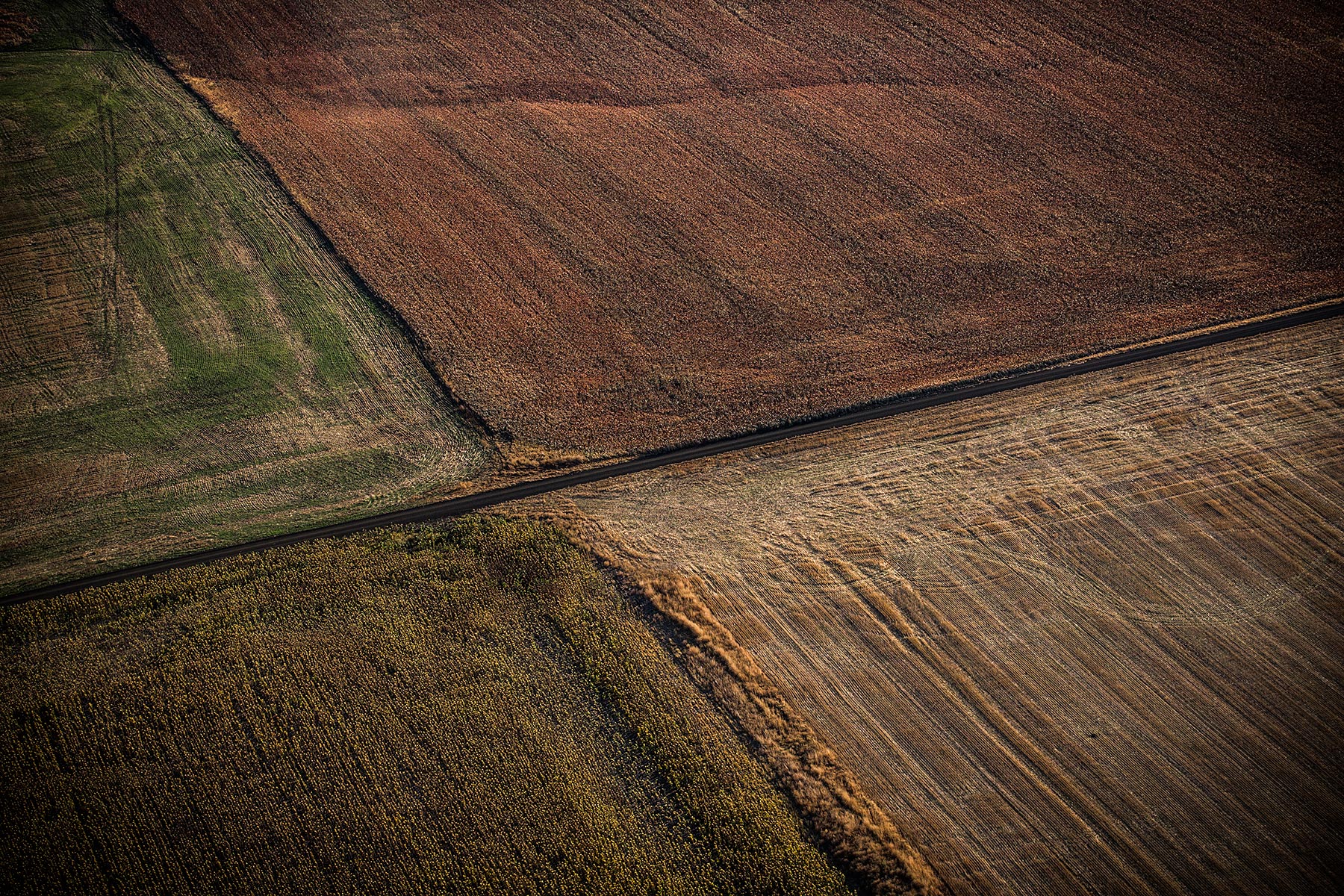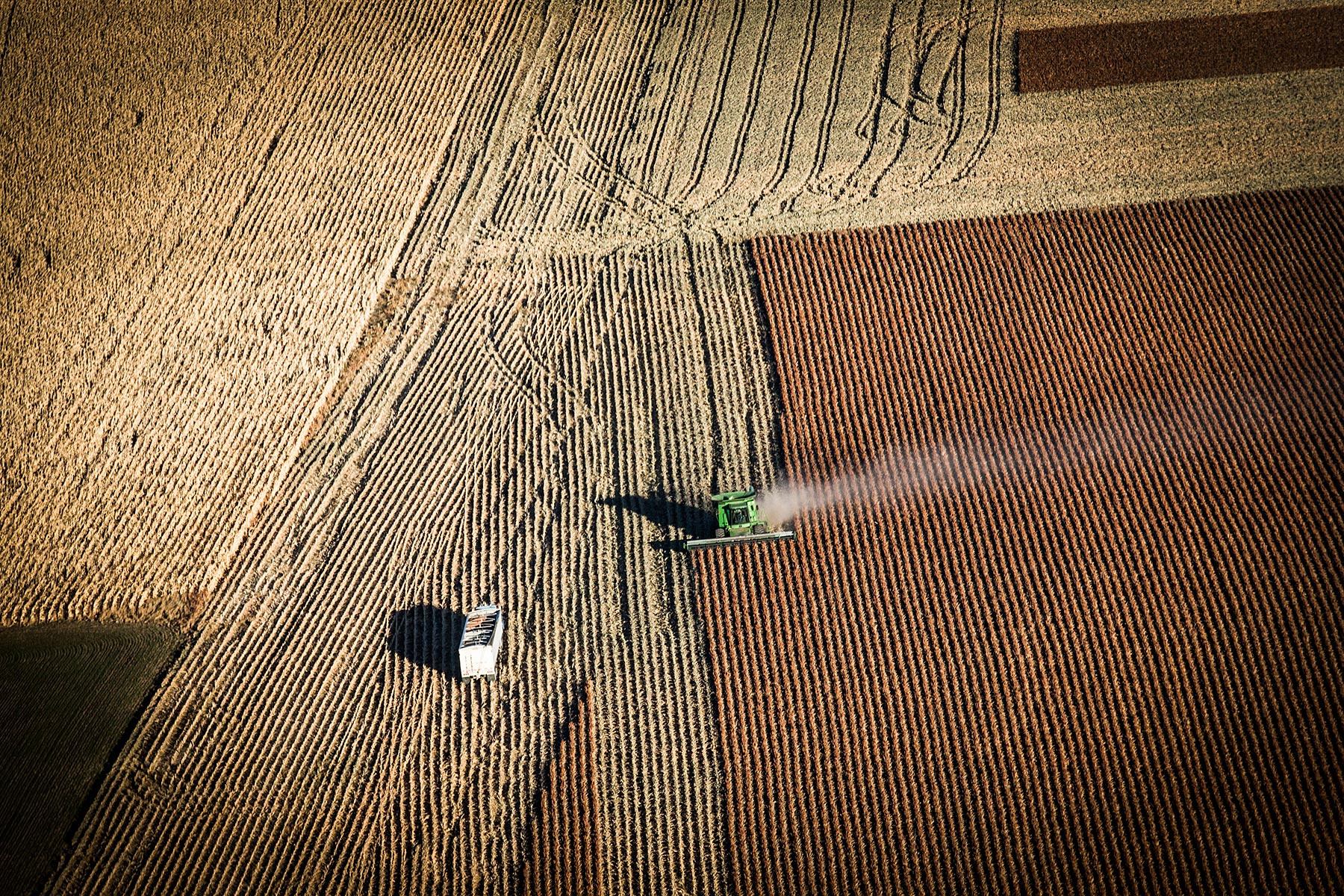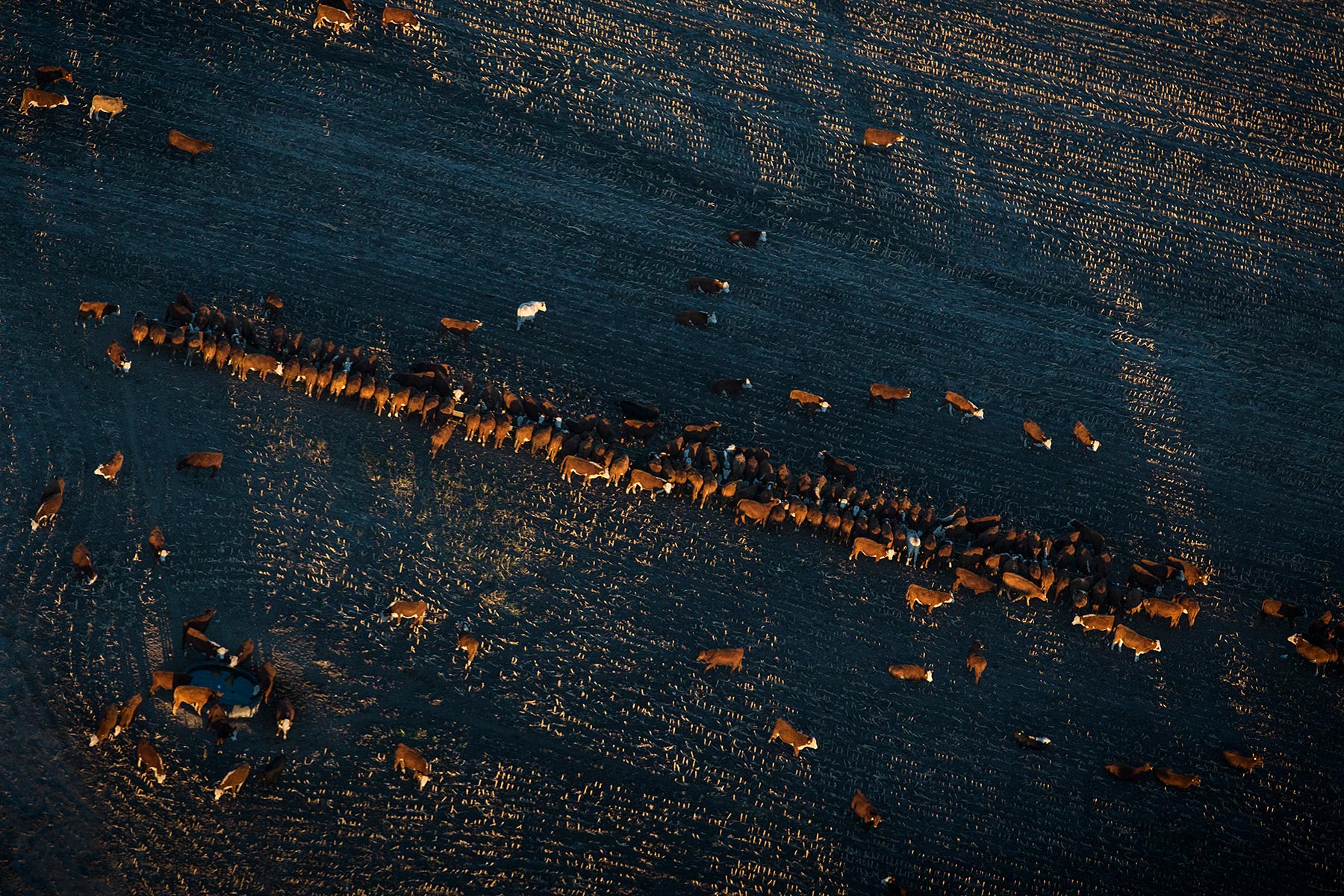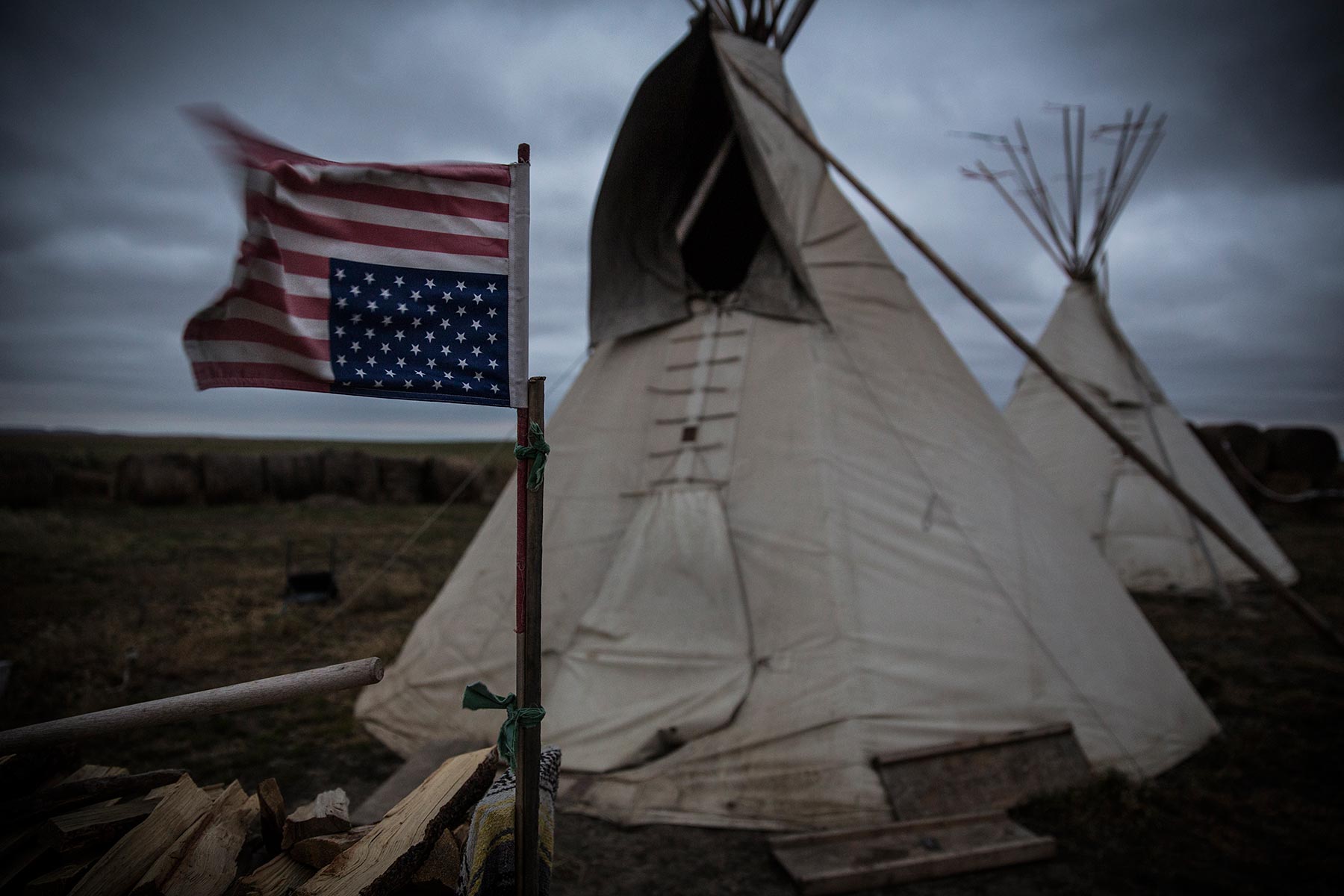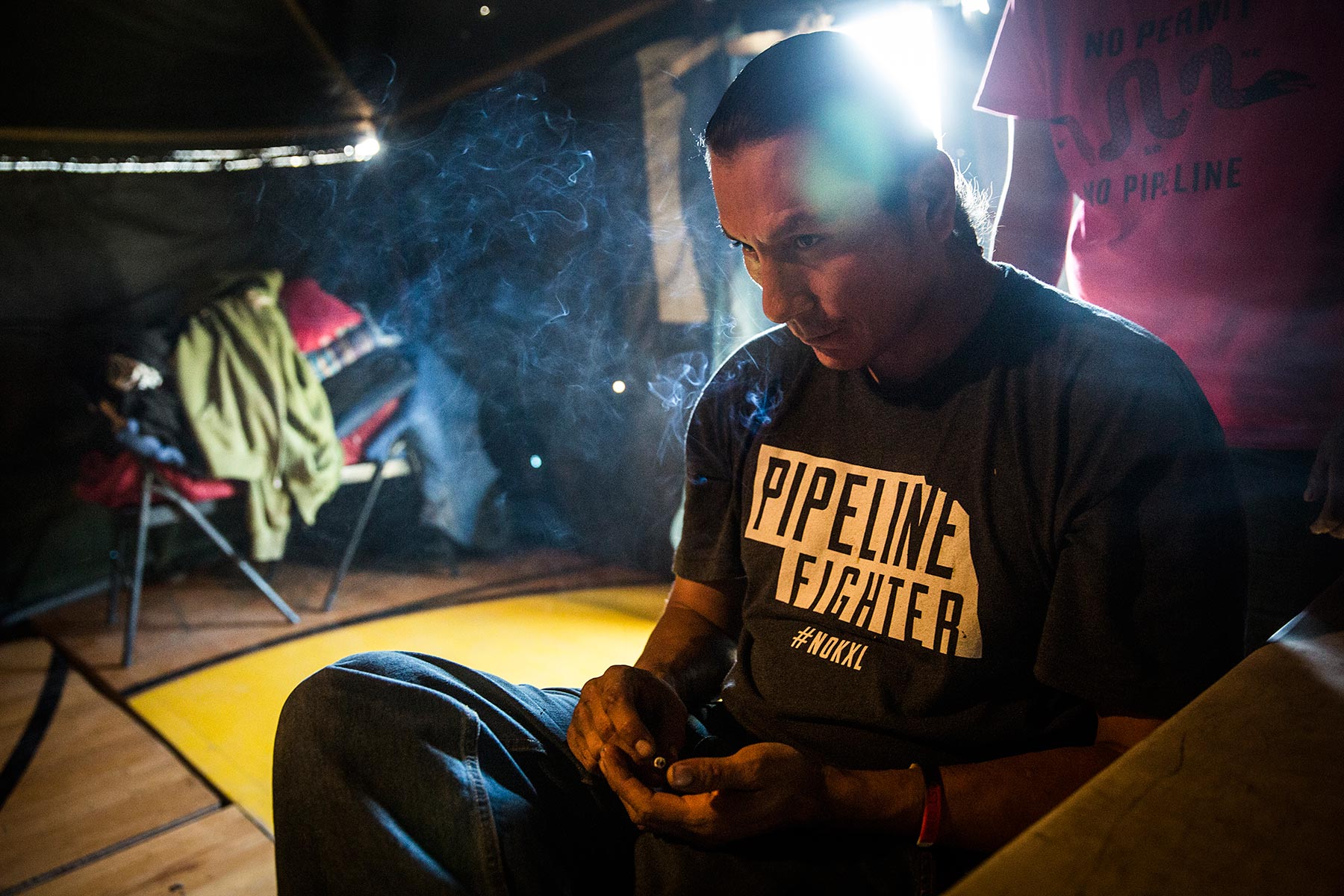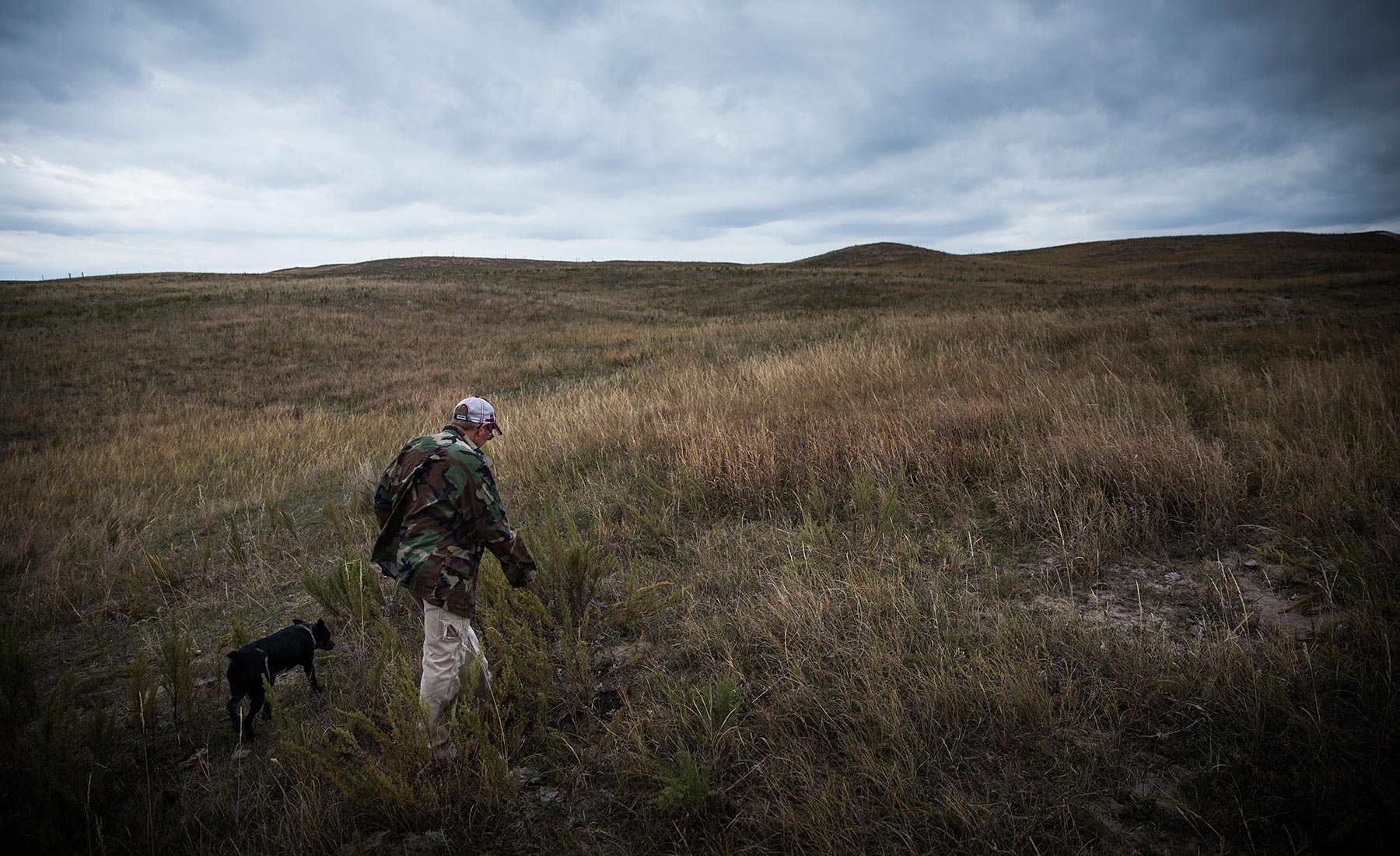
Plains Bedfellows
Part 2: In South Dakota, a new alliance of ranchers and Native Americans fights the Keystone pipeline
By Peter Moskowitz for Al Jazeera America
Photos by Andrew Burton / Getty Images for Al Jazeera America
Cattle rancher John Harter walks to the spot where the proposed Keystone XL pipeline would pass through his property, October 12, 2014.
Published on Friday, October 31, 2014
WINNER, S.D. — Pipelines break. They don’t break often, but when they do, the result can be catastrophic.
That’s what worries John Harter, a rancher who grew up in this rural, poor and conservative area of southern South Dakota. Harter, 51, still lives here, and owns land that the Keystone XL pipeline would cross if it’s ever approved.
Harter points to the 2010 spill of 860,000 gallons of tar sand oil from a pipeline crossing the Kalamazoo River in Michigan when people ask what he’s fighting against. Enbridge, the company which owned the pipeline, just finished cleaning up that spill this summer. A similar amount of that same kind of oil could be flowing at high pressure past Harter’s ranch each day if TransCanada’s Keystone XL is built.
But over the last six years, as Harter voiced his concerns about the Keystone to the ranchers surrounding him, he found his arguments didn’t resonate. Most of his friends, like Harter, usually vote Republican. Unlike Harter, they couldn’t imagine changing their vote for the pipeline fight. So he turned to another group of people that he’s always lived next to, but rarely interacted with: the Native American tribes of South Dakota.
“It’s lonely out here, kind of like being the Maytag repairman,” Harter said as cows scurried past him as he walked around his ranch. “But now I’ve got a lot of friends standing with me — the Rosebud, Oglala, the Yankton. When they all got on board, that made me feel a lot better.”
South Dakota leans conservative, and the state’s front-runner in this year’s U.S. Senate elections, Republican former Gov. Mike Rounds, has said he’ll push to pass federal legislation allowing for the pipeline to be built as soon as he gets into office.
But despite the overwhelming support in the state, the pipeline has also created new alliances in opposition to it, pushing ranchers from red, rural counties to join with the political bloc perhaps most well-versed in fighting for land rights in South Dakota and elsewhere: Native Americans.
“To have land be threatened by eminent domain — I think the non-Indian community is beginning to feel the same way we do,” said Lakota activist Bill Means on a recent Monday, before leading an anti-Keystone rally in South Dakota’s capital, Pierre. “The farmers and ranchers, we call them the new Indians.”
The rally brought more than a hundred members of the state’s nine tribes out to Pierre, as well as several ranchers and a few state politicians. The protest was one of dozens of actions the self-described Cowboy and Indian Alliance has organized in the state since the Keystone was proposed six years ago.
But despite the organizing ability of the Native Americans and ranchers, most recognize that changing the politics of South Dakota will be hard.
“We’re getting people to see our side of it, but it’s been difficult,” says Troy Heinert, a representative in the South Dakota House and a member of the Rosebud Sioux tribe, who attended the protest. “Just about any Republican supports it. It’s a party movement.”
Harter and others say they’re fighting not only against a pipeline, but for a way of life.
The earth in South Dakota is hard to farm. If there’s not enough vegetation to hold the ground in place, the near-constant winds in the state can turn patches of land into nothing but sand. But the land is all many rural South Dakotans have. That’s given the fight in the state a more local focus than elsewhere. Here, the activism isn’t just about global warming, or about land rights, but about the health of the land Native Americans and ranchers have lived on for centuries.
That’s why, when TransCanada asked Harter for an easement to put the pipeline through his ranch, Harter declined. He became the last of the nearly 300 landowners in the state to refuse to sign an easement, until earlier this year, when he decided to settle with the company out of fear he’d be taken to court in an eminent domain suit.
“Some people have 401(k)s and retirement plans,” Harter says. “I don’t have those. This is what I’ve been working for all my life.”
Slideshow: THE PIPELINE ROUTE FROM ABOVE
Many Native Americans have the same fears. The Keystone’s route skirts Indian reservations, but passes through land that the tribes nonetheless say is important to their way of life.
The pipeline would carry oil from the oil sands in Alberta, Canada. That oil is thicker and heavier than most crude oil, which means that when it spills, it sinks to the bottom of water bodies and is harder to clean up. The Enbridge spill in Michigan took four years to clean. Activists say cleaning up a spill from the Keystone could take even longer.
TransCanada’s pipelines have leaked several times, though none of the incidents have been as serious as the Enbridge spill. And TransCanada’s record in South Dakota has been mostly positive: There’s already a smaller pipeline run by the company that runs through South Dakota, also called the Keystone. There have been a few leaks on that pipeline, and only very small ones in South Dakota. Political opposition to it has been virtually nonexistent.
“I’ve received very few negative comments on that first pipeline,” says Rounds, the leading contender for this year’s Senate election. “So while there may be individuals who have concerns, [TransCanada] seems to be a pretty good corporate neighbor.”
Meanwhile, oil is flowing through the state in other ways, mainly on overcrowded rail lines. That backs up the shipment of grain and other agricultural products.
“The vast majority of people in South Dakota understand how important it is to get that oil off the rail lines,” Rounds says.
Poll numbers support Rounds’ assertion — nearly 70 percent of people in states through which the Keystone would pass support the project.
While two anti-Keystone politicians — Rick Weiland and Larry Pressler — have made headway in the South Dakota Senate race this year, Rounds, the only pro-Keystone candidate, is still favored to win.
It’s unclear how much of a factor Keystone has been in the race, though Weiland has said he hopes to pick up votes in the conservative western part of the state by highlighting his position on Keystone.
But even Weiland’s supporters acknowledge that his candidacy is an uphill battle.
Of the anti-Keystone protests led by Native Americans in South Dakota, the longest-running is a spirit camp along the Keystone’s route, about an hour south of Pierre and just a few miles away from John Harter’s ranch. There, Sioux tribe members have for the last six months taken turns sleeping in a spacious tent made out of metal pillars and a blue tarp. Several teepees surround the tarped living area. The camp dwellers live on donations of snacks and soda, and use a wood stove to keep the space warm, which creates a thick smoke inside the tent.
The camp serves as an inspiration for the anti-Keystone activists who live around it. But it also serves as a symbol of their limited power to render change in one of the most conservative states in the nation: The camp is surrounded by empty ranchland and is hours from significant population centers. Few cars pass the rural road leading to it. Without knowing it’s there, the camp is easy to miss. Day and night, the only sound coming from the camp, besides the chatter of activists, is the blue tarp, rustled by the South Dakota winds.
“Sometimes, because the system is so one-sided, it does seem kind of hopeless,” Harter says on a drive down the empty roads connecting his ranch and the spirit camp. “But if you give up, then you don’t know what the outcome could have been.”
